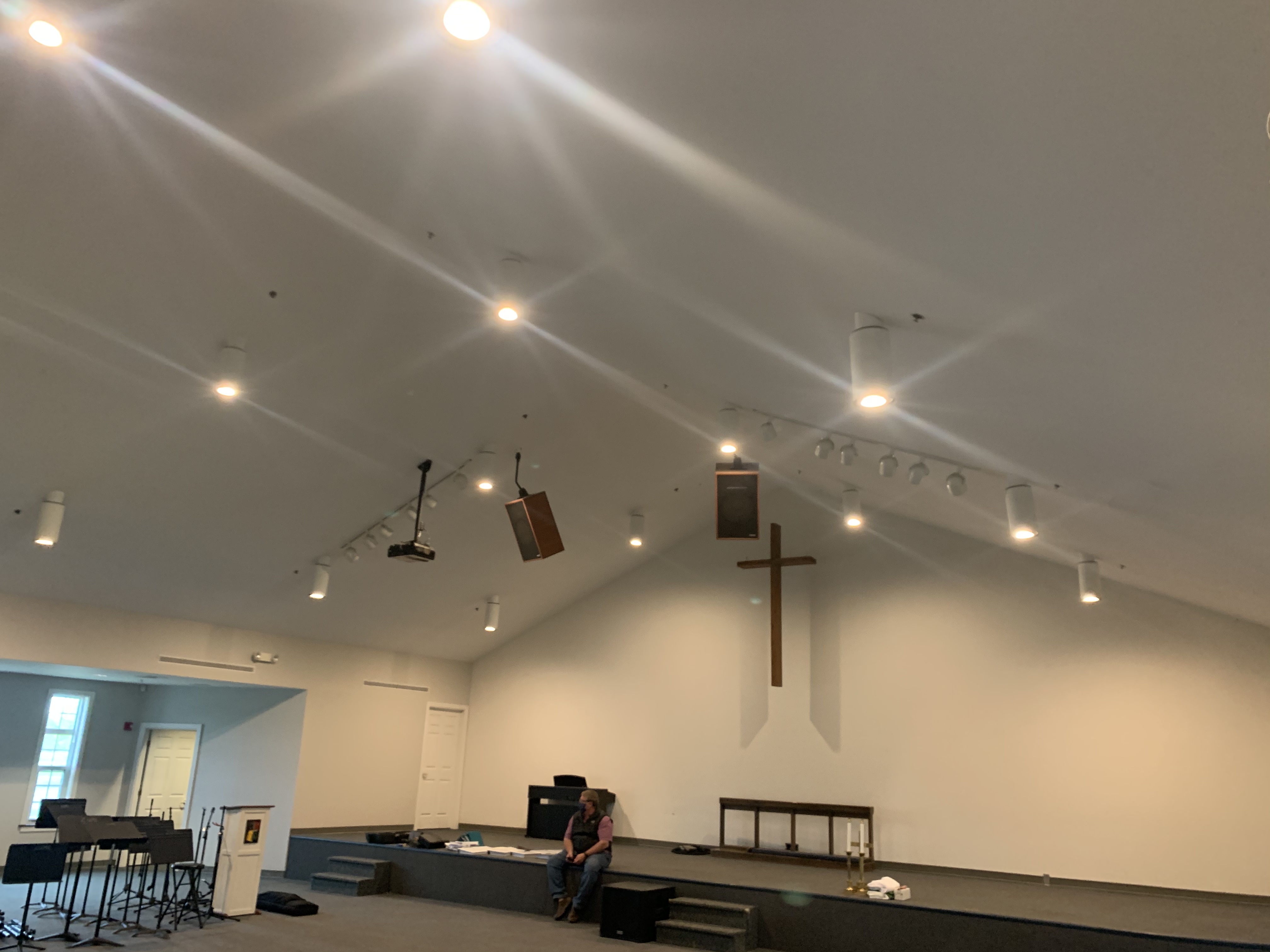Case Study: Zionsville United Methodist Chruch
 In this Auralex Case Study, we will be showing a real-life immersive example of a large-room analysis for a house of worship. This specific analysis is led by Andy Symons of Zionsville United Methodist Church, located in Zionsville, Indiana.
In this Auralex Case Study, we will be showing a real-life immersive example of a large-room analysis for a house of worship. This specific analysis is led by Andy Symons of Zionsville United Methodist Church, located in Zionsville, Indiana.
Part 1: ZUMC-Chapel-Analysis_V2 - PDF From Auralex
To: Andy Symons - ZUMC
Project: Sanctuary
Date: 5/21/2020
Thank you for your interest in Auralex® Acoustics, Inc., and for choosing us to assist with your acoustical concerns. Please keep in mind that these suggestions are prepared off-site with the information supplied and the combined experience of Auralex® Acoustics.
Project Overview
Traditionally, the criterion for the design of large enclosed spaces has been the reverberation time (referred to as “RT” from this point forward), or the time required for sound to decay 60dB once the source has stopped. What the listener ultimately experiences in terms of acoustic quality is derived from the relationship between the RT, the room’s function, and the cubic volume of the room. When the RT and the function of a room “disagree”, the listener typically regards the room as an unpleasant acoustical environment. (ex: “boomy”, “harsh”, “unintelligible”). The RT at 500Hz is the current accepted qualifier for optimum RT of a given space, due to the fact that it lies within a very active frequency range for speech and music applications.
Using the data, you provided, we created a model of your space to determine your current RT. We then introduced treatment into the model to help bring the predicted RT and the ideal RT (again, based on the volume and function of the room) into better “agreement”.
Goals
The ideal RT for a 56,048 ft.3 facility is 1.20 seconds at 500Hz for optimum for speech intelligibility in this space. The untreated predicted RT at 500Hz is currently about 1.17 seconds. Reducing the RT will require the strategic placement of absorptive materials across wall surfaces. The graphs to follow represent the ideal RT of the room, the untreated RT, and the predicted RT for the treatment suggestion outlined below.
The table and graph below demonstrate the difference between the current untreated response in the room, and the implementation of the suggested treatment.
*The graph above depicts our projected results for your room, based on the information supplied.
Summary
Incorporating this treatment plan as indicated should help bring the RT at 500Hz to an acceptable and pleasing level. This will translate to the listener as a more controlled and articulate, less “boomy” or “muddy” listening environment.
*Be sure to measure prior to ordering to ensure products will fit.
Best Regards,
Kevin Booth
Director of Sales
Office: (317) 842-2600
Direct: (317) 715-6884
Toll-Free: (800) 959-3343
Indianapolis, Indiana USA
Part 2: ZUMC-CHAPEL-DIAGRAM_V2 - PDF From Auralex

Part 3: Before VS. After
| Before | After |
 |
 |
 |
 |
 |
 |
Part 4: A Message From Andy Symons on the Auralex Creative Spaces Podcast
KB: Transitioning over your current role as technical director at a House of Worship, what are your responsibilities?
AS: I'm responsible for producing two weekly worship services. I'm on a headset, and I call to the audio guy, the video Switcher, the slide operator and, the lighting guy from a take sheet. We produce two services every week, and there's a lot of preparation throughout the week doing audio files and video files prepared for each week's worship service. Over the past year and a half, I've done a lot of video shooting and editing as well. That's a skill set I didn't have before diving in a couple of years ago, and now that I've been doing this for a couple of years—more trial by fire learning about how to edit video. We've been trying to create a more robust worship experience for our parishioners during the pandemic. We need to have some things that capture their interest since they're sitting in front of a phone or an iPad, or a laptop every Sunday morning.
KB: You've been a proponent of working on the acoustics in the building. You recently worked with Auralex on a smaller worship room. Can you tell us about that project?

